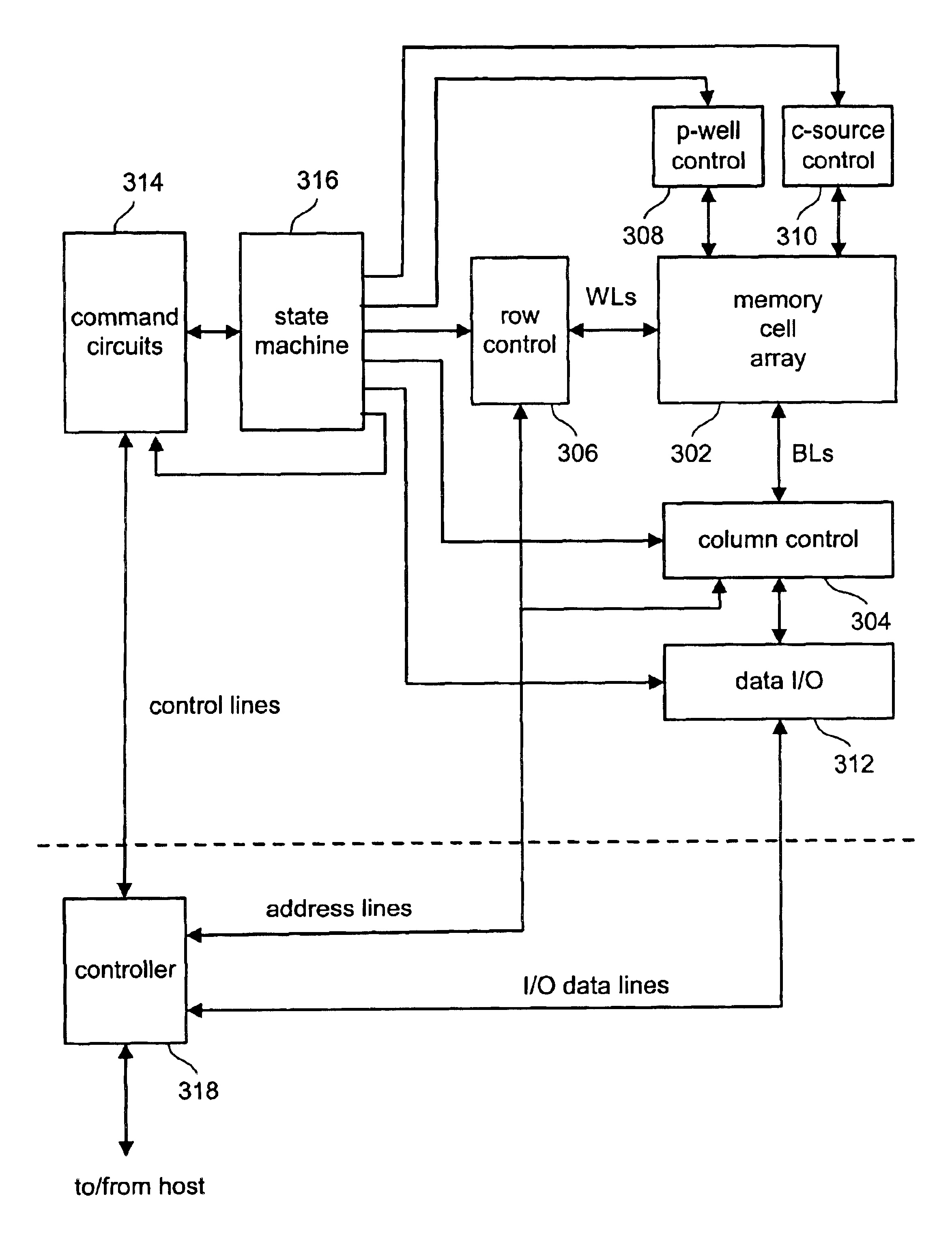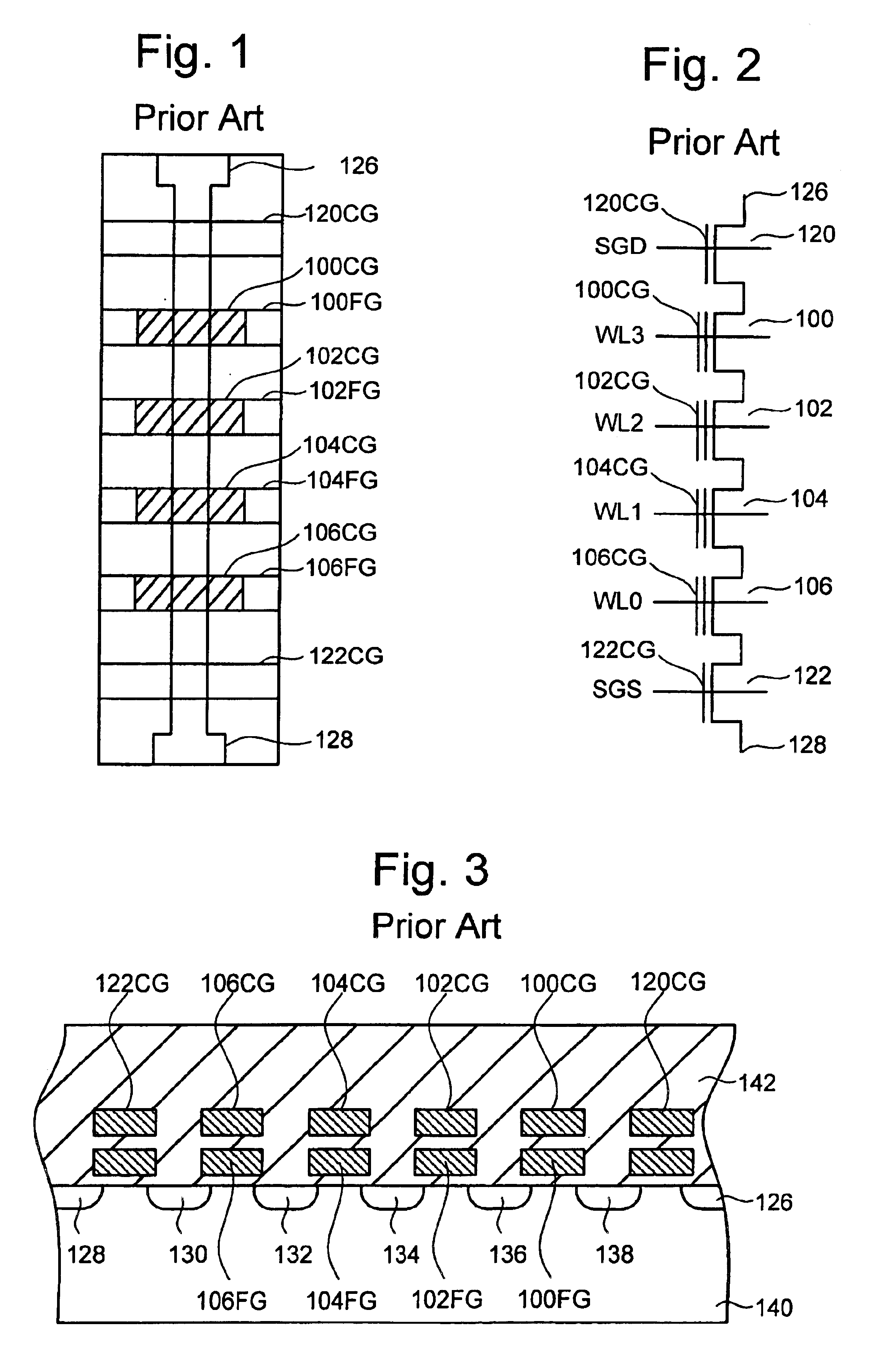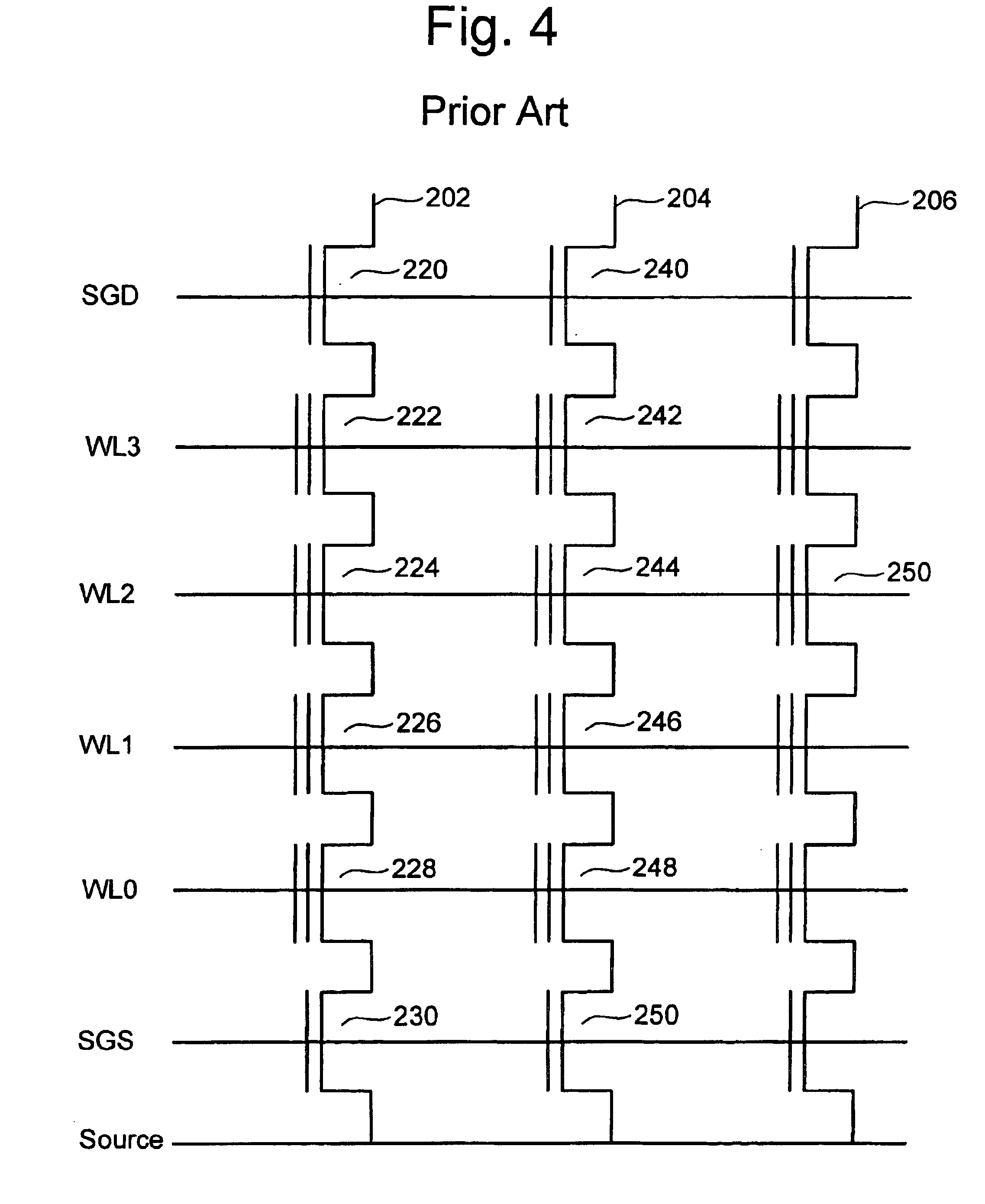Source side self boosting technique for non-volatile memory
a source side and non-volatile memory technology, applied in static storage, digital storage, instruments, etc., can solve the problems of low boosting potential, program disturbance, inadvertent programming, etc., to reduce gidl, minimize program disturbance, and improve self-boosting performance
- Summary
- Abstract
- Description
- Claims
- Application Information
AI Technical Summary
Benefits of technology
Problems solved by technology
Method used
Image
Examples
second embodiment
FIG. 15 depicts a method for programming memory cells according to the present invention. At time t0, the drain voltage (e.g. drain / bit line 442) and drain select control gate (control gate 432) are driven from zero volts to Vdd. The selected word line and the unselected word lines on the drain side are maintained at Vss (e.g. zero volts). The word line for the source side neighbor is kept at Vss; however, the other unselected source side word lines are driven to Vssb. Additionally, the source is driven to Vdd and the control gate of the source side select gate is driven at Vdd (control gate 430). Because the source select gate is turned on, the source is electronically coupled to the string and boosts the voltage potential of source side channel 450. The drain side channel is at a potential of Vdd−Vtd and the source side channel is at a potential of Vdd−Vts, where Vtd is the threshold voltage of the drain side select gate and Vts is the threshold voltage of the source side select g...
third embodiment
FIG. 16 depicts a method for programming memory cells according to the present invention. FIG. 16 uses a similar boosting scheme as illustrated in FIG. 14, with some changes as described below. The drain, drain select, unselected drain side word lines, selected word line, source and source select are the same as in FIG. 14. At time t0 of FIG. 16, the source side channel region is charged to Vdd−Vtd by driving Vssb on all of the source side word lines, as done in FIG. 14. In FIG. 14, the extent of the additional source side boosting is determined by the voltage difference between Vpass and Vssb. However, in FIG. 16 the voltage potential on the source side word lines is reduced to 0v at time ti (where ti is after t0 and before t1). The source side word lines (except the source side neighbor) are then ramped to Vpass at time t1. Initially, as the voltage on the source side control gates is decreasing from Vssb to 0V, the source side channel region will remain at Vdd−Vtd as long as the ...
fourth embodiment
FIG. 17 depicts a method for programming memory cells according to the present invention. FIG. 17 uses a similar boosting scheme as illustrated in FIG. 14; however, the drain select is driven at Vdd+Vtd from t0 to t1 rather than driving the drain select at Vdd. After t1, the drain select is driven at Vdd. Thus, after t1 the drain side channel and the source side channel are at Vdd+Vboost, rather than at Vdd−Vtd+Vboost. In some embodiments, it is easier to increase the drain select rather than the drain. During programming, many bit lines must be selected and the capacitance is large. Only one drain select (or a small number of drain selects) need be selected, thus, the capacitance is relatively small. The timing diagram of FIG. 16 can also be modified as per the teaching of FIG. 17 so that the drain select is driven at Vdd+Vtd rather than driving the drain select at Vdd.
PUM
 Login to View More
Login to View More Abstract
Description
Claims
Application Information
 Login to View More
Login to View More - R&D
- Intellectual Property
- Life Sciences
- Materials
- Tech Scout
- Unparalleled Data Quality
- Higher Quality Content
- 60% Fewer Hallucinations
Browse by: Latest US Patents, China's latest patents, Technical Efficacy Thesaurus, Application Domain, Technology Topic, Popular Technical Reports.
© 2025 PatSnap. All rights reserved.Legal|Privacy policy|Modern Slavery Act Transparency Statement|Sitemap|About US| Contact US: help@patsnap.com



